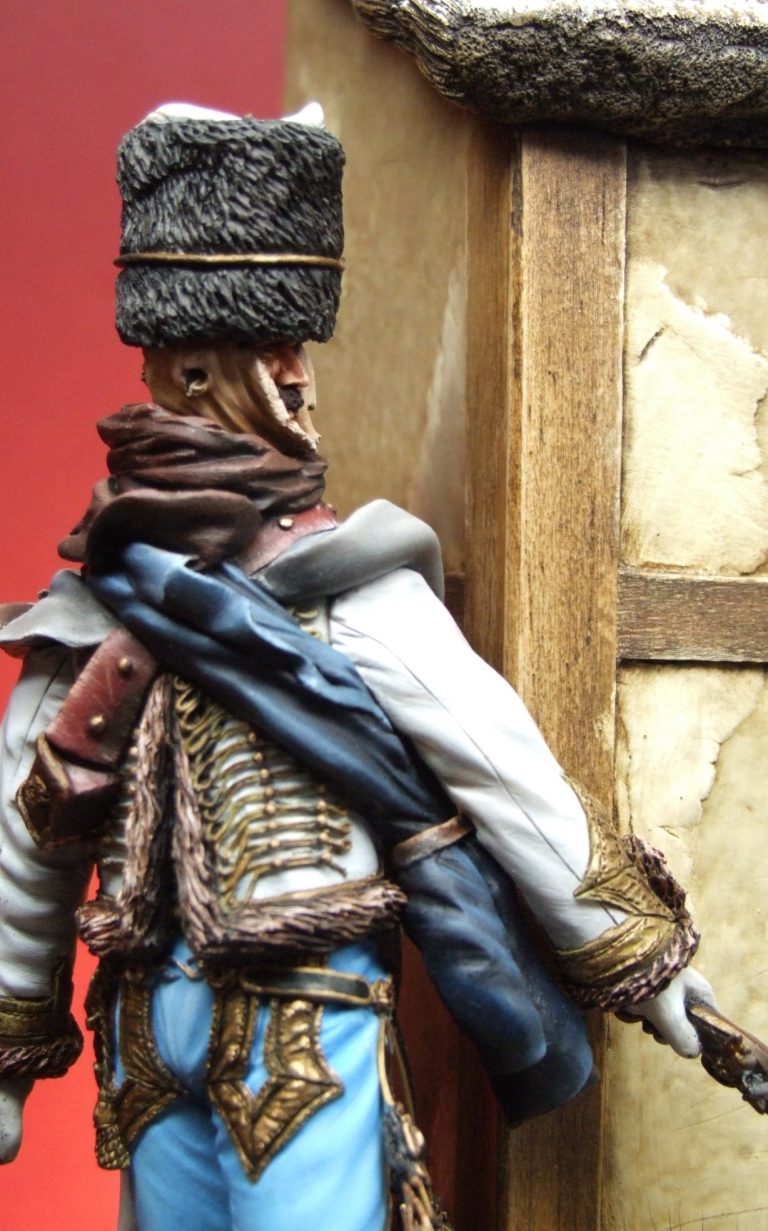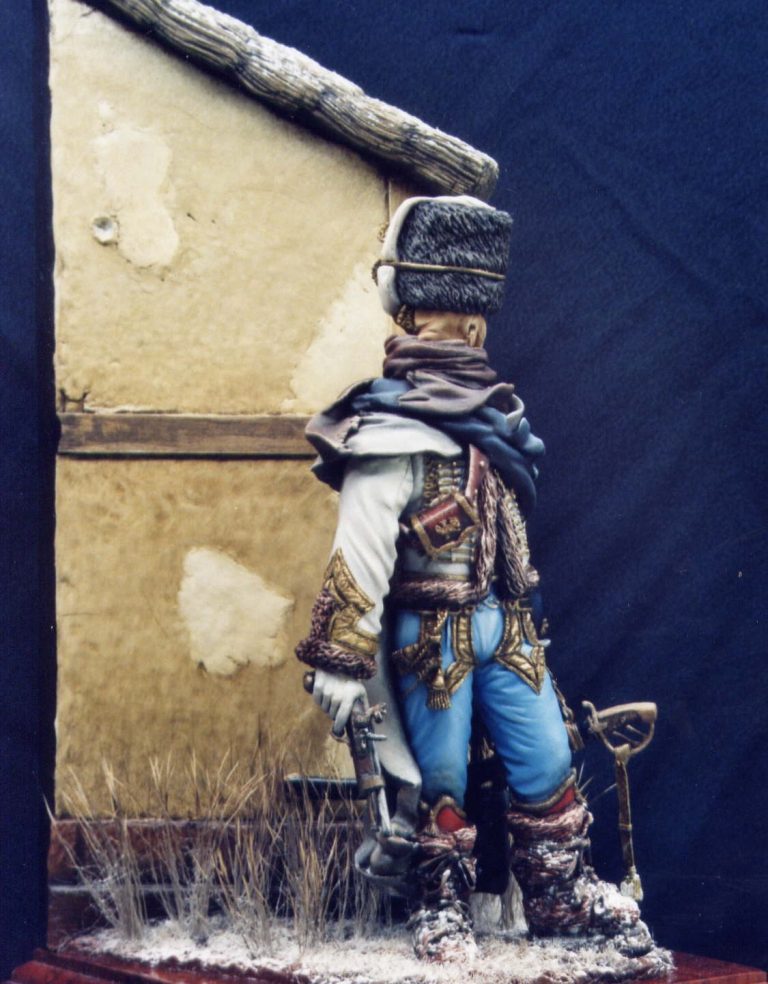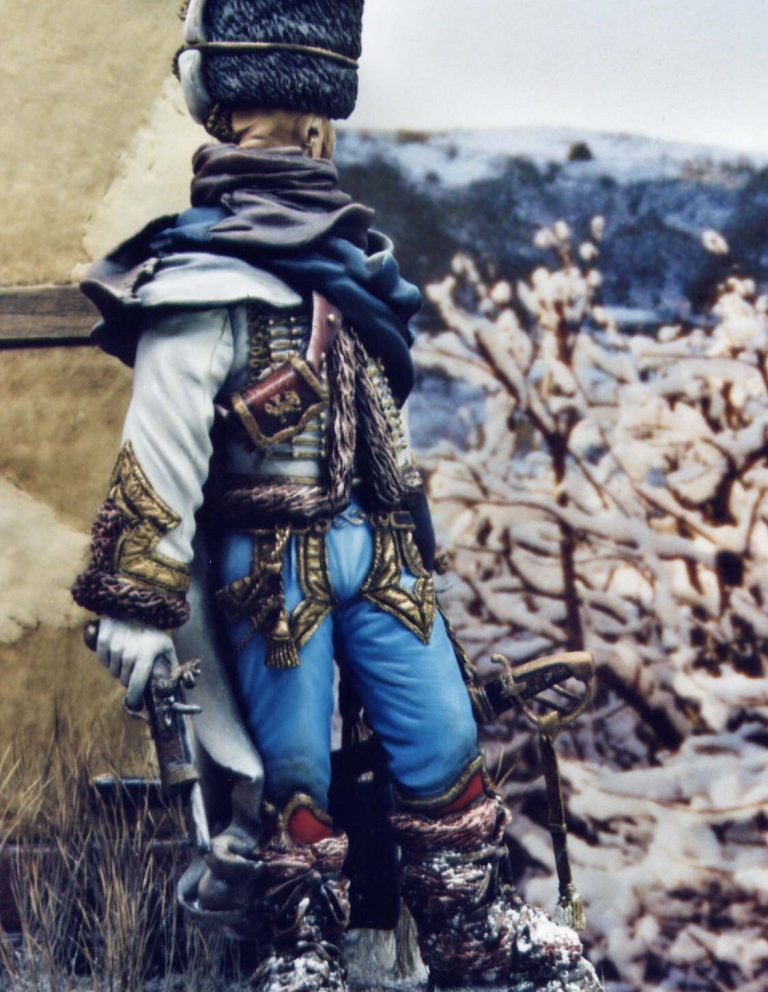
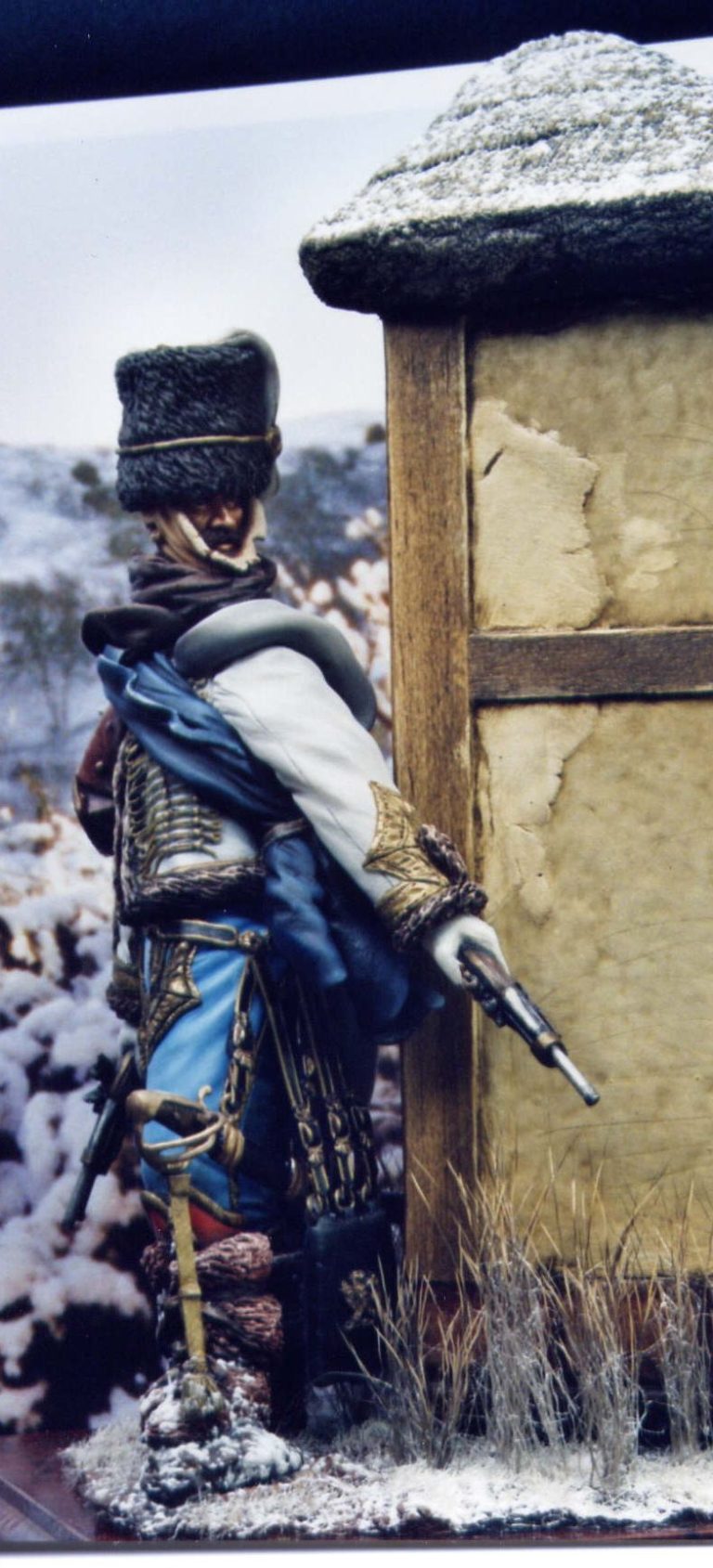
French 5th Hussar
120mm resin kit from Stormtroopers
Article in Military Modelling magazine in 2005
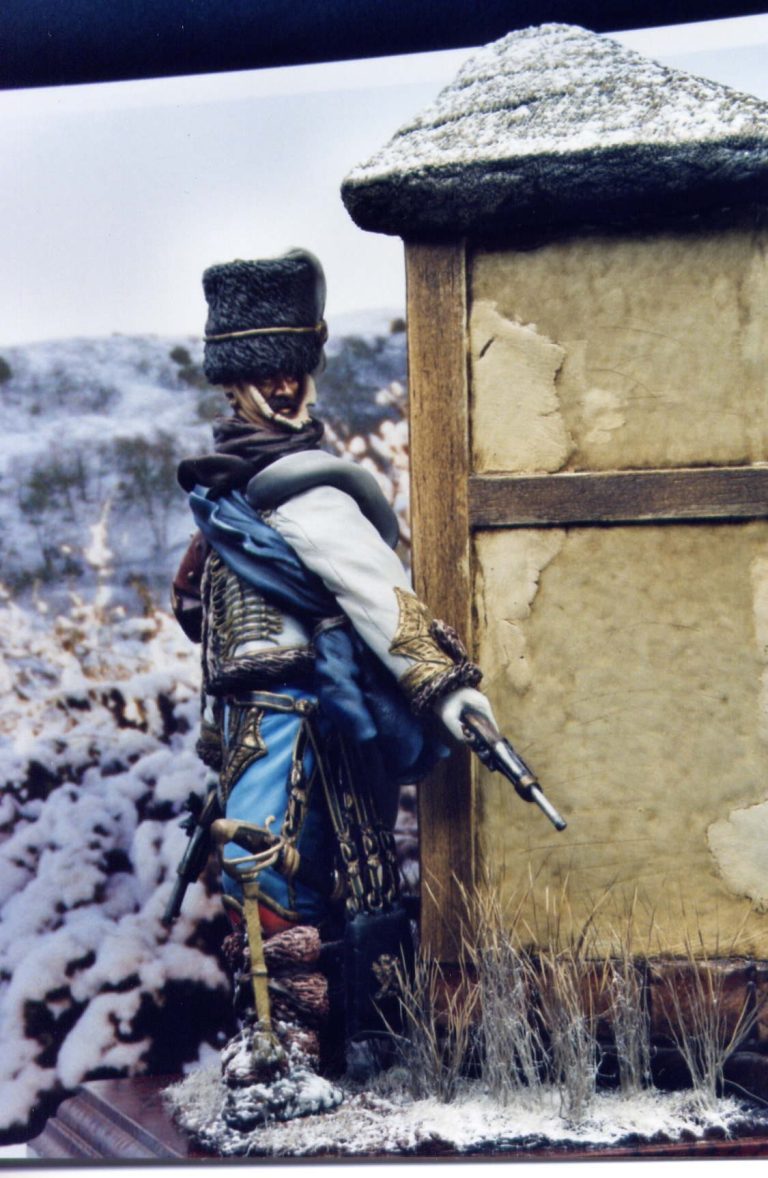
I’ve mentioned previously that I’ve been searching through old photos for the website – you remember, when we actually took physical photographs rather than digital files ?
And I’ve come across a few models that I can’t find the text documents for.
This being one, but I thought that maybe writing up a short article for it might be worth doing.
It’s perhaps viewed as an old model now – sculpted by Stuart Hale for his own company Stormtroopers over twenty years ago – but it’s one, even after all that time that I like.
It’s one of Napoleon’s Hussars on the retreat from Russia after an unsuccessful invasion by the French forces, being beaten back not solely by the armies of Russia, but being devastated by the sub-zero temperatures of the Russian winter.
Stuart’s managed to wrap this one up in so many layers of clothing and bits of material which matches the documented cases of soldiers scavenging for any scraps that might keep them warm.
So effective is the clothing that Stuart’s made, I feel chilled just looking at the piece.
The kit
It’s a full resin kit with several parts, all pretty cleanly cast and few if any fit problems.
I can’t find any shots of the bare resin parts, or for that matter any of the work in progress pictures, although I thought I’d taken them for the original article in Military Modelling.
Painting
There are a lot of options for the uniform on this model, all pretty colourful as is the case with Napoleonic uniforms. So I chose sky blue trousers and a white jacket with gold trim.
I’m not any kind of expert on Napoleonic uniforms, but painted this along the lines of suggestions made by friends who do have such knowledge. Problem is I can’t for the life of me remember which Unit of Hussars this is and had to revert to a knowledgeable friend ( Paul Dobson ) to remind me that it was a 5th Hussar.
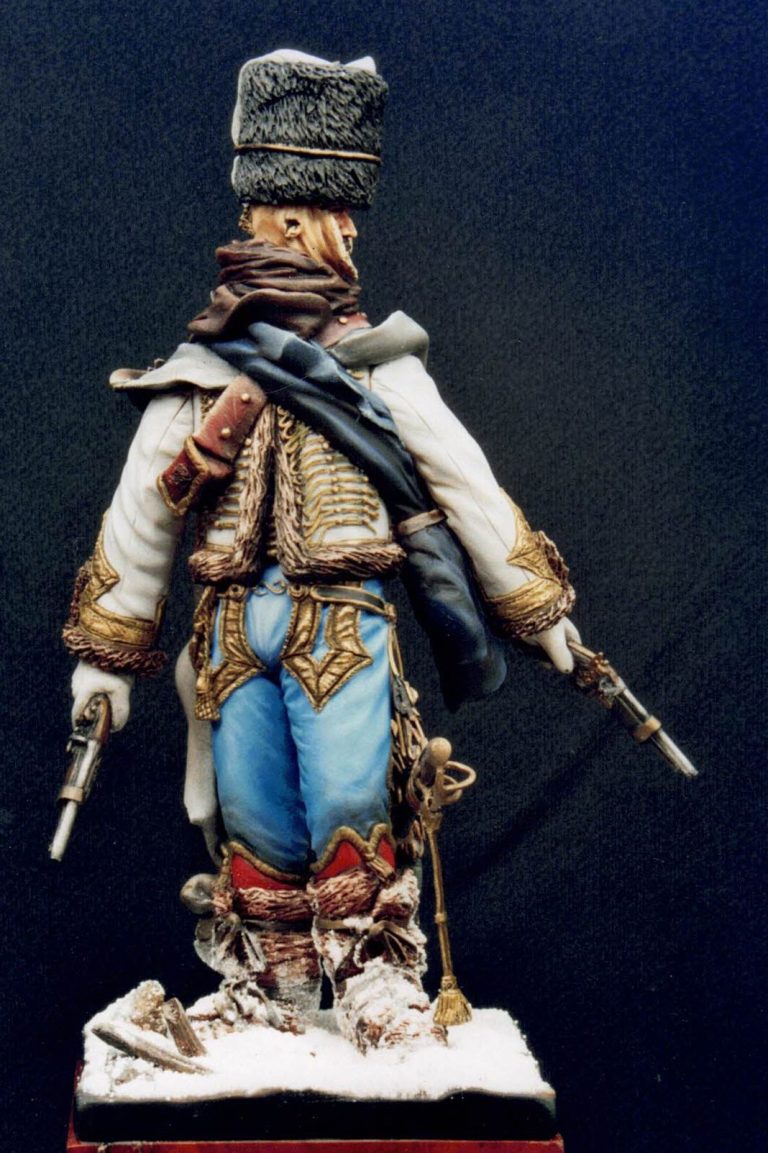
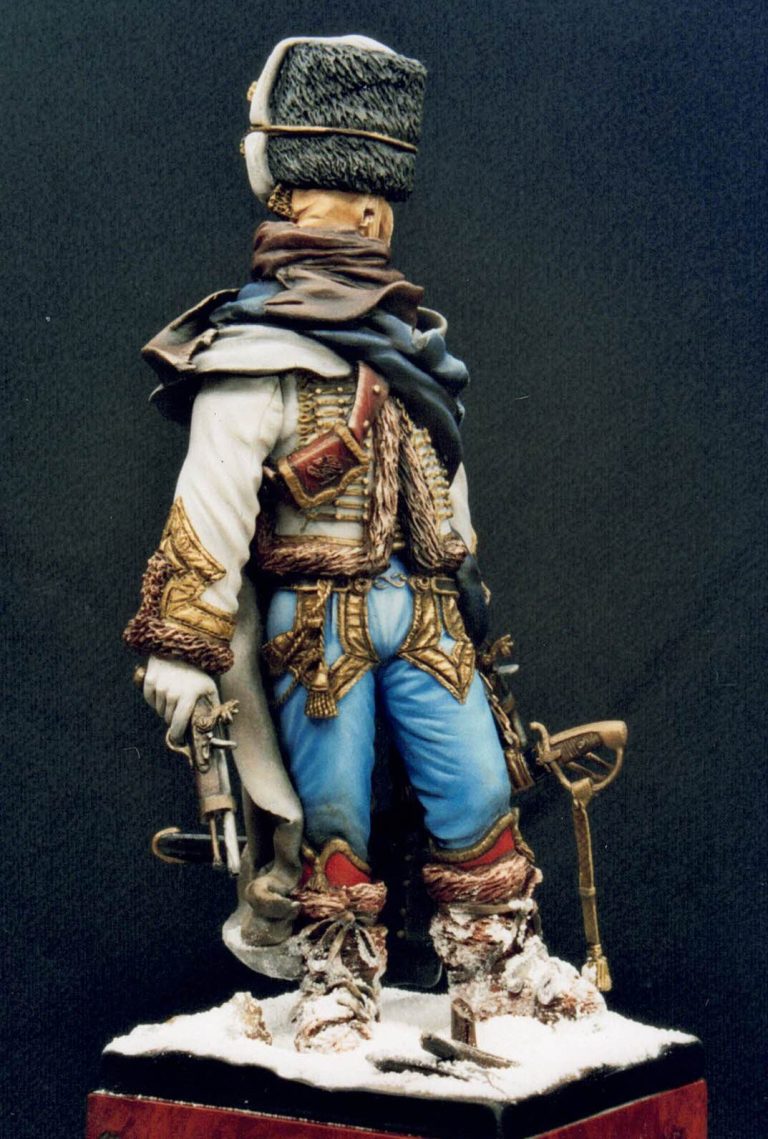
This is what happens when you don’t keep references, box information or save articles properly !
So, regarding the painting, all the usual methods of oils over acrylics, the trousers being Prussian Blue with a lot of Titanium White added.
I think it was at this point that I recognised that painting white areas with oils was difficult, even with a strong pigment like Titanium White.
The problem is that starting with a shadow colour of even a mid-grey makes for a very difficult time when trying to build up mid-tones, never mind highlights, by just adding more white.
Even turning it around and beginning with pure white and adding the grey to that isn’t that easy, because the white is very easy to pollute if a false stroke is made with the brush.
I managed it after stripping the paint off a couple of times, using the latter method and only tinting the shadows, then allowing the paint to dry fully and then adding washes of the mid-grey to get the shadows.
So really, it would have been easier to use acrylics, and avoid the frustration of waiting for the paint to dry – Light Bulb !
In this scale the gilt decorations are a lot more visible than on a 54mm figure and I took the time to do a lot more detail work on them, beginning with Burnt Umber oils with just a little Winsor and Newton Gold mixed in, adding Yellow Ochre with a higher percentage of the gold added to build up the mid-tones and then a little Buff Titanium with Gold added.
The theory behind this said it should work, the small amount of gold giving the impression of the gold thread sparkling where light catches it, but in fact the solid coloured pigments masked it almost completely and after allowing the paint to dry, used a trick that I think Phil Kessling wrote about, which was to add a satin varnish with a small amount of gold printers ink mixed in, the gold then giving the effect of the gold threads, which is what I was attempting in the first place.
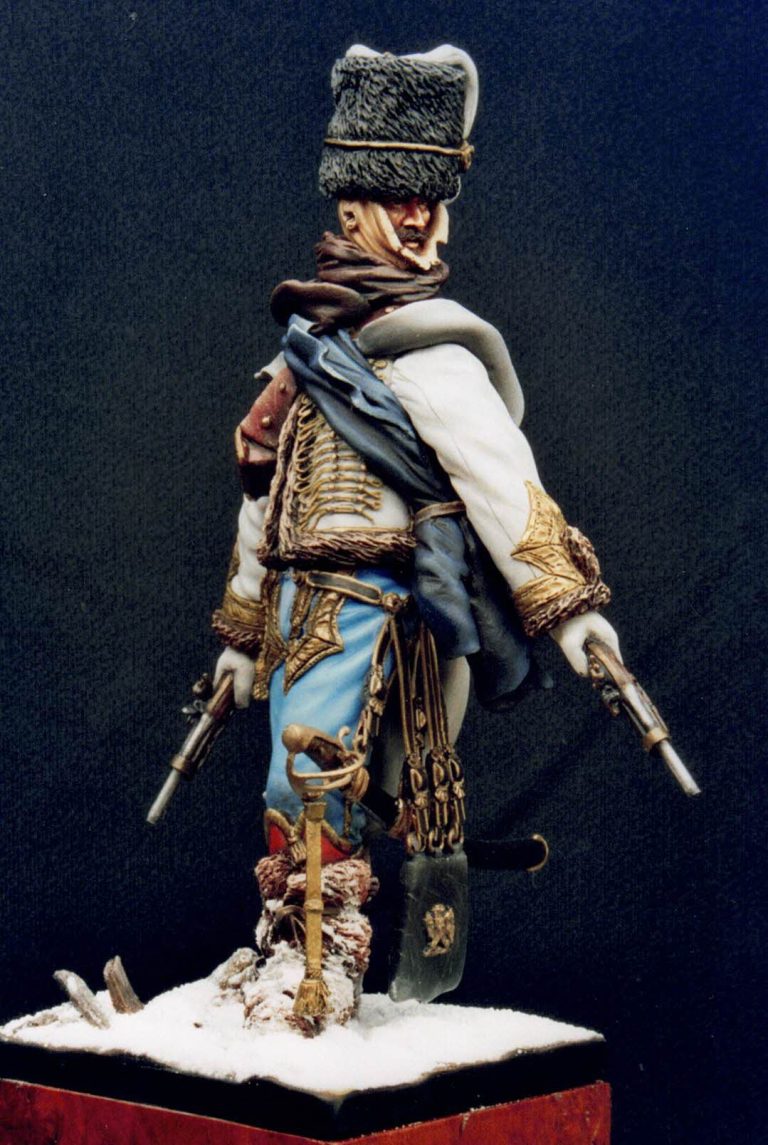
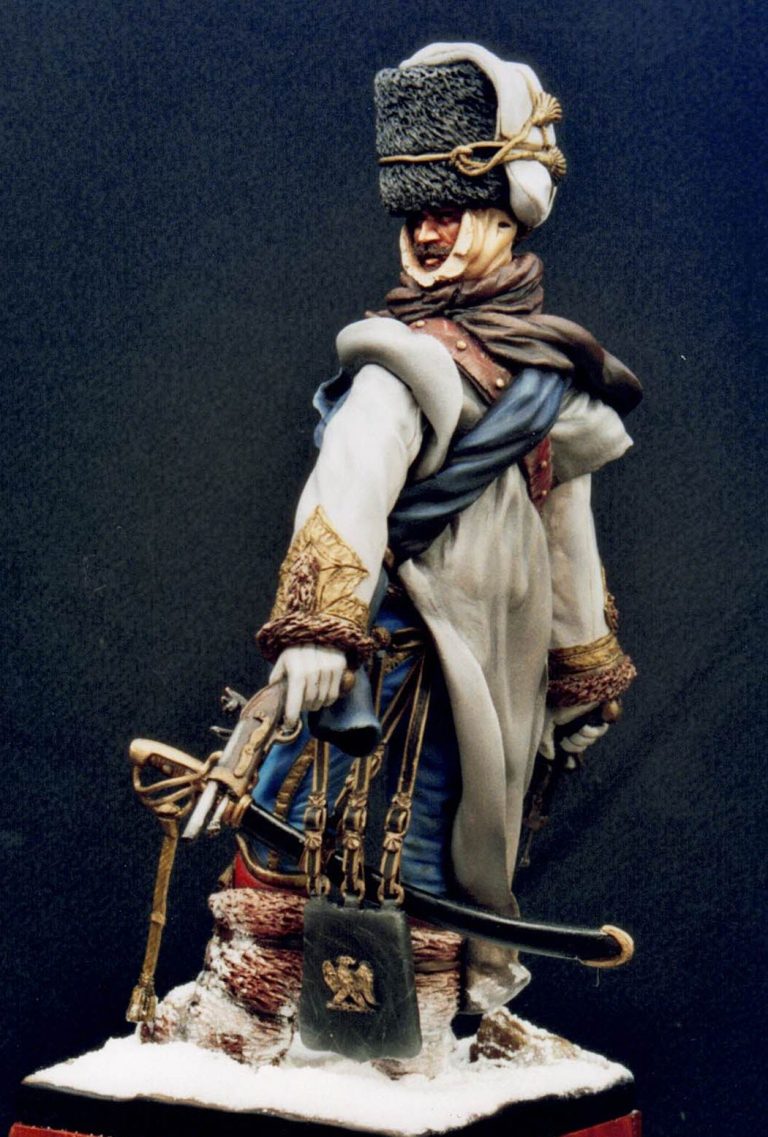
I found it interesting to create different colours and textures for all the different items of cloth or animal skin that had been used by the soldier to keep himself warm. There’s a lot of latitude for the artist to take here with these scraps, and it adds a lot of interest to the overall look of the model.
The setting
Initially I set the model onto a simple square base with some snow – Baking Soda actually – with some sprinkled onto the fur covered boots to tie the model into the base.
I’d been to visit relatives in Todmorden over the Christmas period, and there was a lot of snow on the hills, fortunately I’d taken a camera and snapped a few shots, printing these out on some photographic paper and used one shot as a background for the figure.
It worked nicely, although it is getting more difficult in the UK to take shots like this that don’t have “modern” things in the way – telegraph poles, fences, roads etc all foul up a perfectly good shot for the average Viking !
The pose is a rather strenuous twist, as though he’s either reacting to something happening behind him, or awaiting the appearance of something or someone.
With that thought in mind, I tried out a house corner that my son had designed, albeit for smaller figures, but it did seem to work ok for a low farm building with a wood frame construction.
A larger base was needed for the house corner, and the figure fortunately hadn’t been glued in place on the initial base, so it was easily removed and put on the new setting.
Final thoughts.
The pose is a long way from the offerings we were used to in the 1980’s, those “straight up-and-down” clothes-horses that were more a line up of different uniform without the human aspect intruding too much.
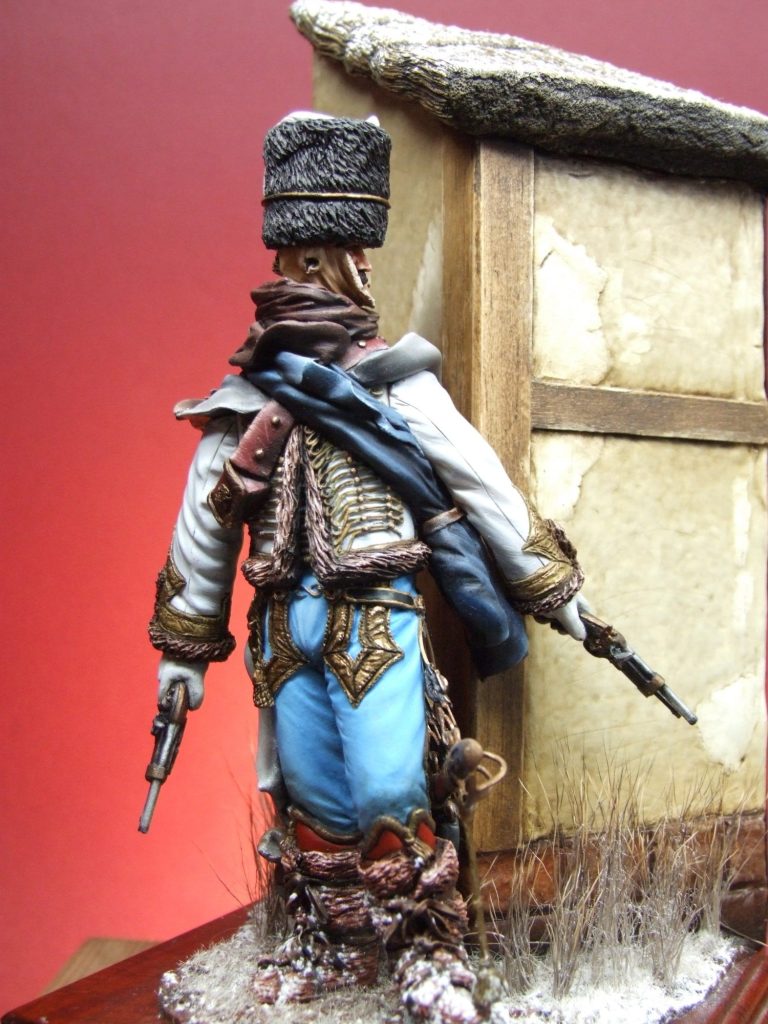
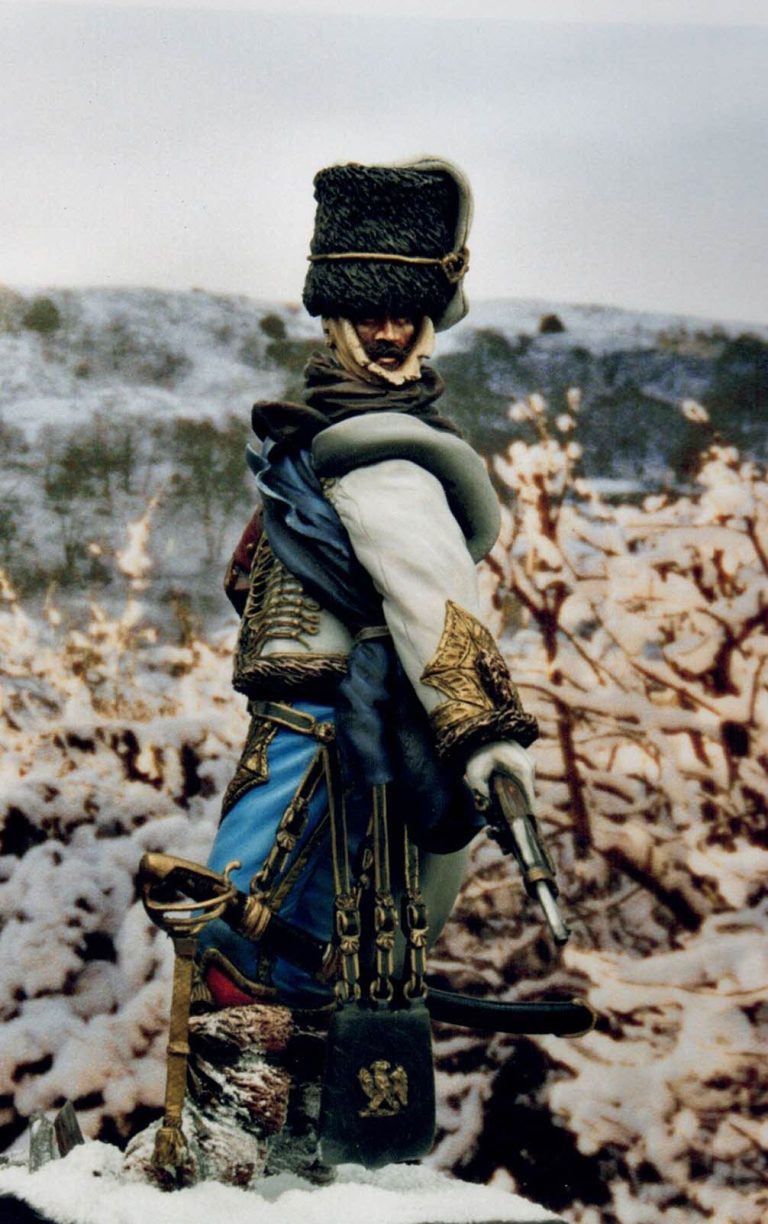
This figure isn’t perfect, the neck could perhaps do with shortening a little, but other than that, it’s a well engineered piece that has a lot of character and a distinct “cold weather” feel to it.
It’s a tall piece too, which would dominate a display – in a good way – and offers the painter a wide choice of uniform colours to depict, with perhaps the additional detail to the sabretache to further interest the onlooker.
Highly recommended for those interested in the Napoleonic period.
